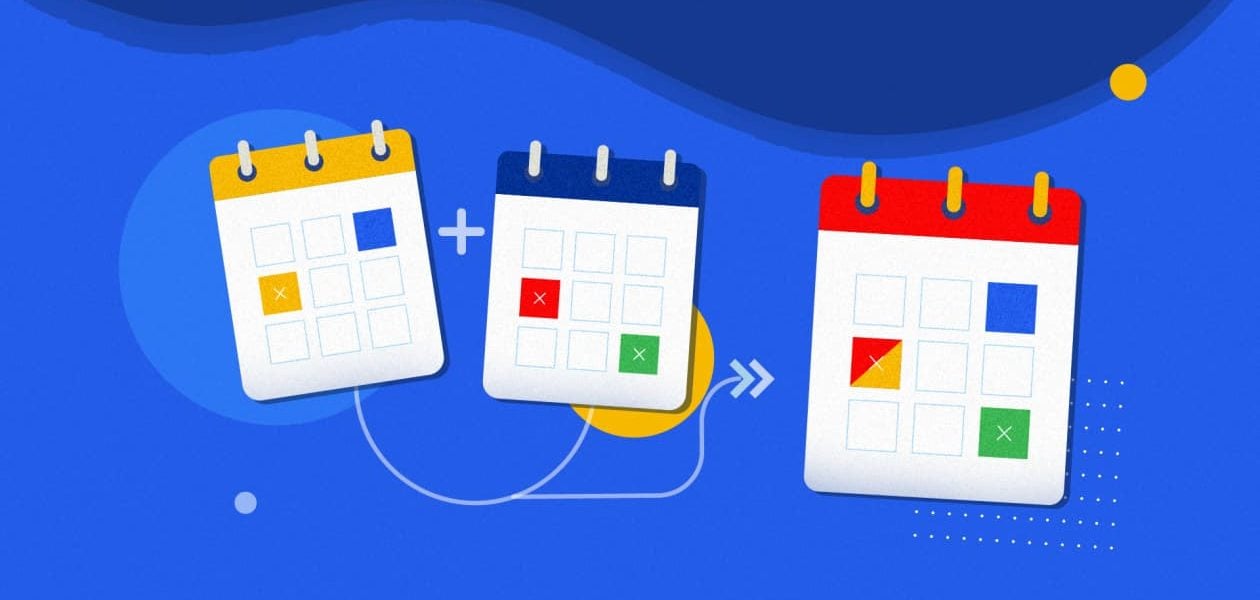You probably maintain all your personal and official appointments, time tracking of tasks, and to-dos on the all-encompassing Google Calendar. While having the main calendar is cool, it may not be so if it contains both your private and job-related tasks. That’s because you may need to share your calendar with your co-workers and it wouldn’t do to give them a sneak peek into your personal life. This is why it’s highly recommended to keep multiple Google Calendars for better compartmentalization.
Moreover, if you have a longish list of calendars that your teammates have shared with you, it would be really cumbersome to click on each one by one to see what’s X or Y up to. What if you could just merge multiple Google Calendars and see them as one? Here’s a quick guide on how to merge multiple calendars on Google and even merge other calendars from Outlook or Apple. Alternatively, you want to learn more about exporting your calendar data here.
Table of contents
- Creating a new Google calendar
- Adding someone else’s Google calendar
- How to share your Google calendar
- Benefits of multiple Google calendars
- How to merge Google calendars
- Exporting multiple Google calendars with Tackle
- Merge Google calendar with Outlook calendar
- Merge Google calendar with Apple calendar
- FAQs
Creating a new Google calendar
If you want to keep your work and personal calendars separate on Google Calendar, just follow the steps below to create a new calendar.
Step 1: Open Google Calendar on your computer.

Step 2: Next to “Other calendars” on the left, click on the + sign
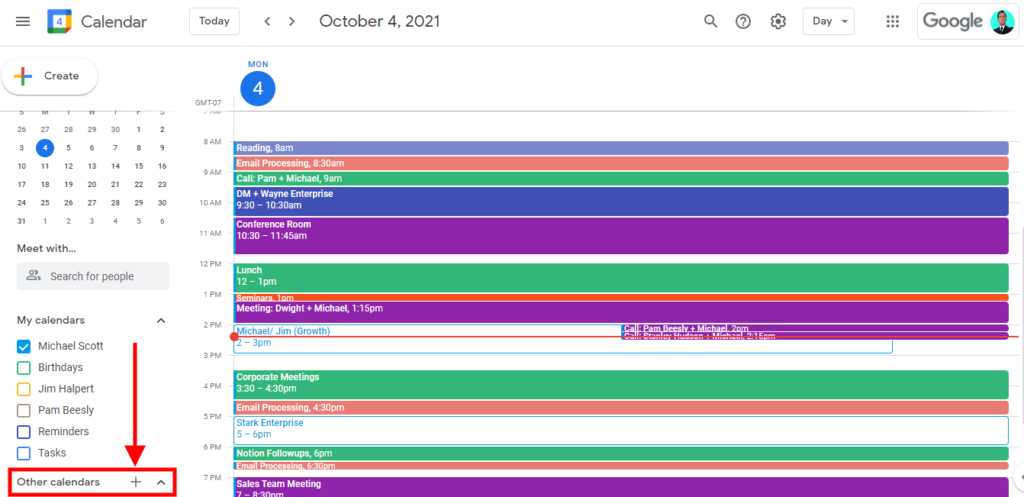
Step 3: Select “Create new calendar”.
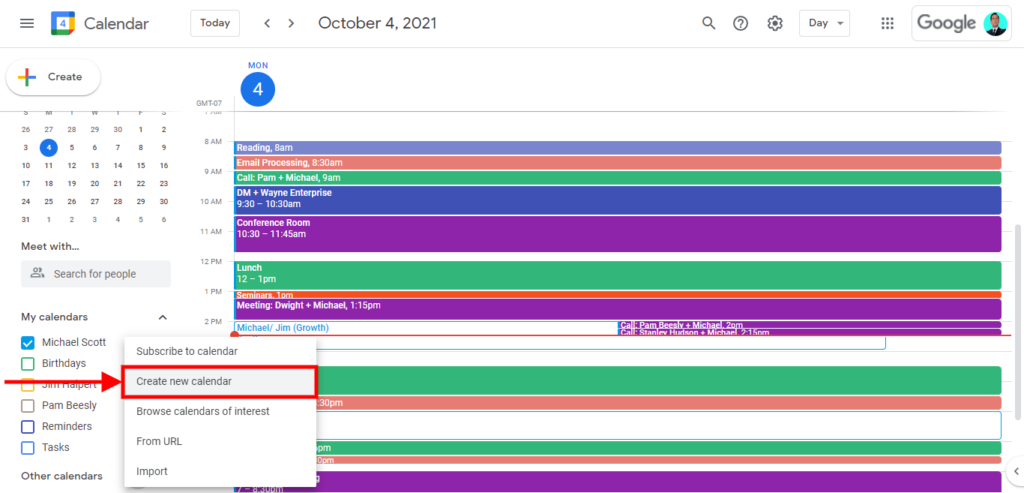
Step 4: Give your calendar a name and a description.
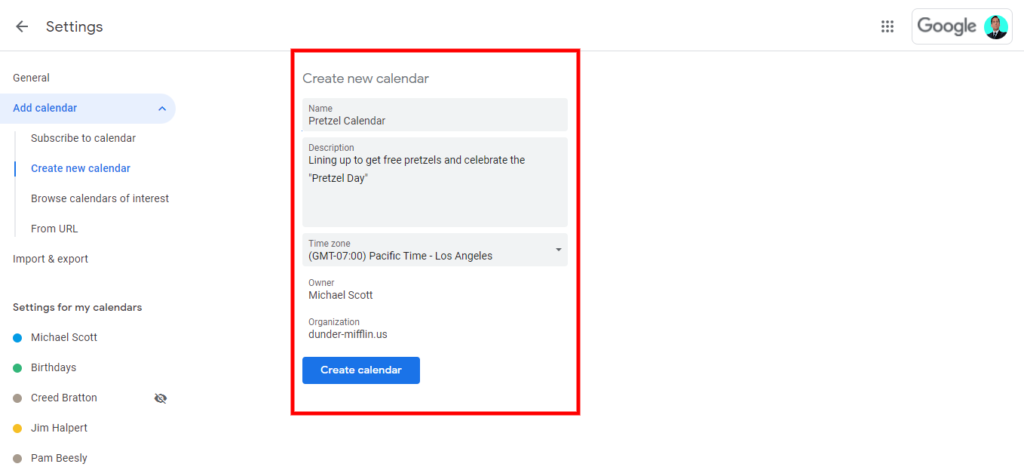
Step 5: Click “Create calendar” .
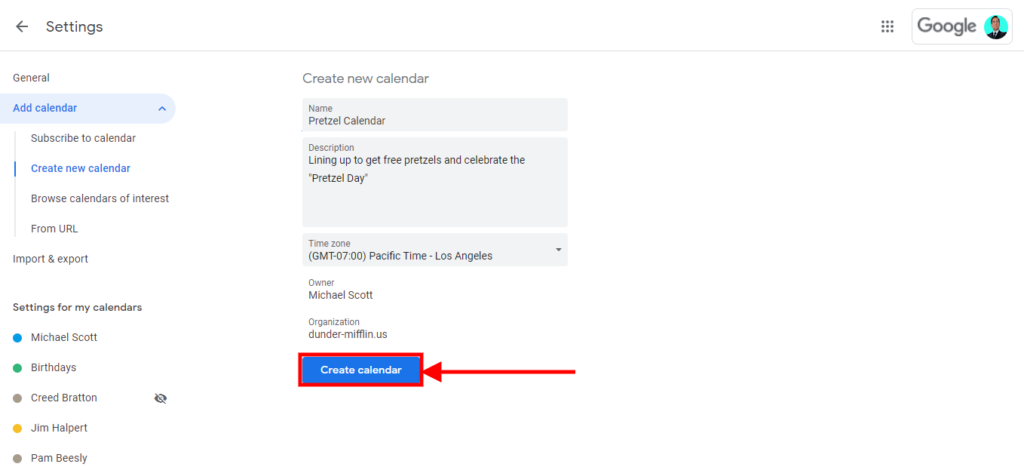
Step 6: You will find your new calendar added to the list of your current calendars on the left side panel.

Adding someone else’s Google calendar
When you want to view your team members’ calendars so that your meeting scheduling is more accurate, you can add their calendars too on your Google Calendar. The following sequence shows you how.
Step 1: Click the + sign beside Other calendars on your Google Calendar and select the option Subscribe to calendar.
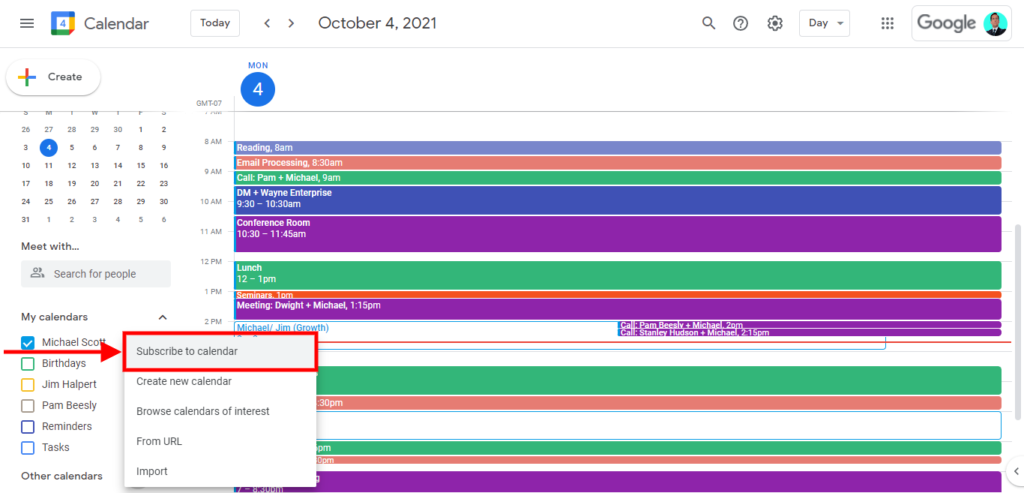
Step 2: Write down the email address of the person whose calendar you want to add.
Note: If the selected person’s calendar is accessible without any permission, it will be added to your calendar automatically. If the person’s calendar does not have free access, a pop-up window will be on your screen, asking you to request permission to grant access.
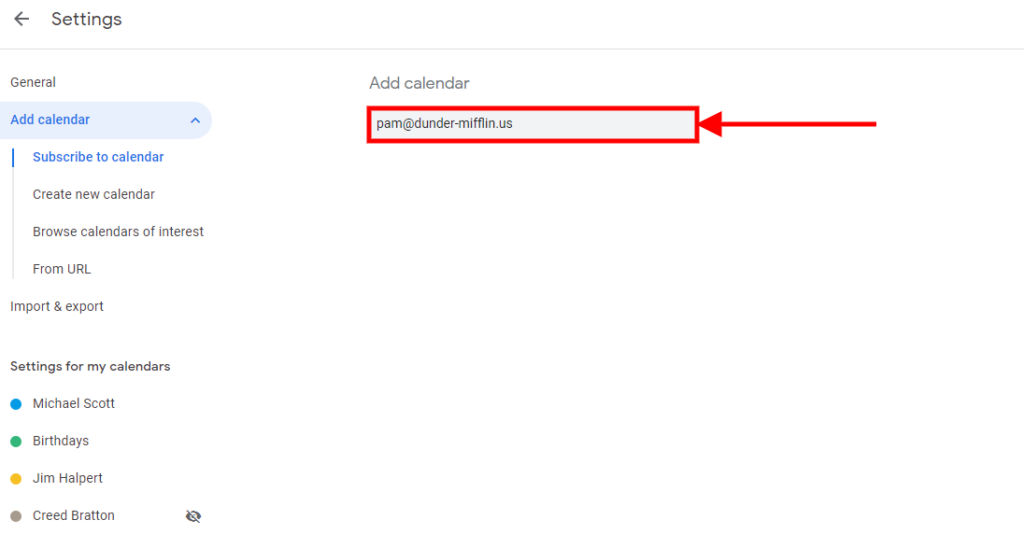
Step 3: Send a message to request access and once the permission is given, you can add the calendar.
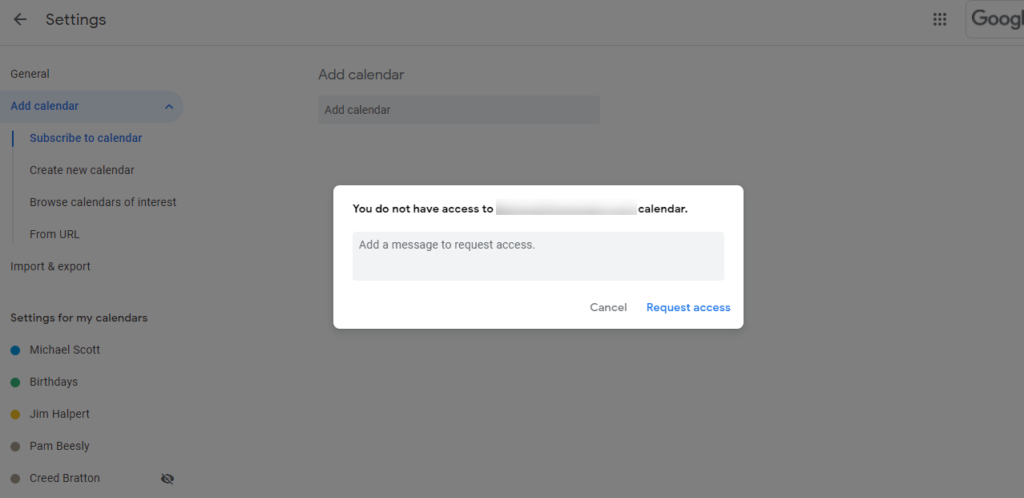
Additional Step 1: To add public calendars, you need to click the + sign beside Other calendars and select the Browse calendars of interest option.
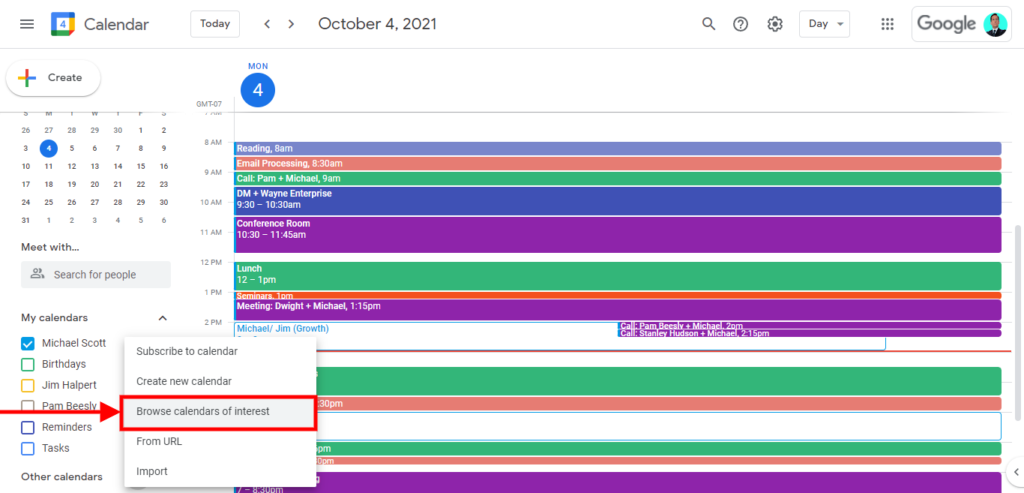
Additional Step 2: Check the box beside all the public calendars that you want to add to your calendar.
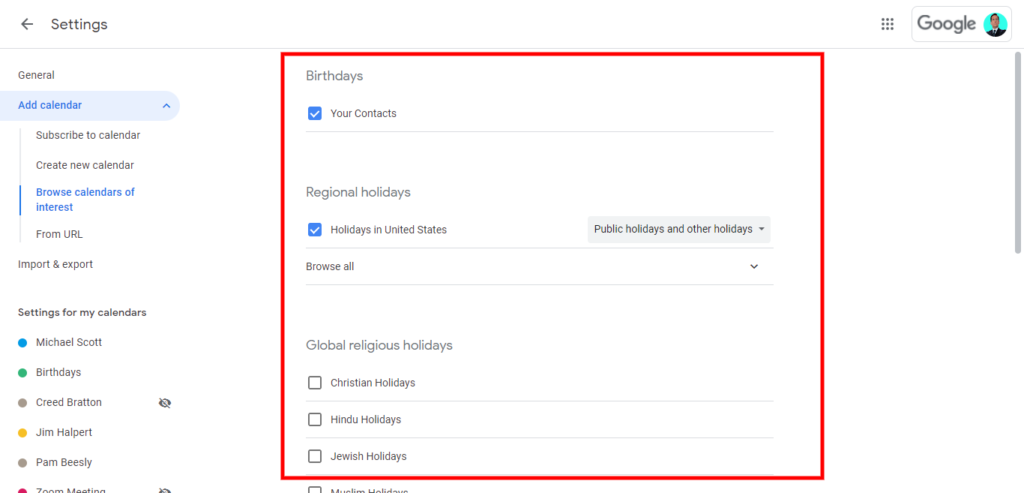
How to share your Google calendar
If you want to share your Google calendar, you simply need to follow some easy steps as detailed below.
Step 1: From the left panel, under My calendars, click on the “three dots” of the calendar you want to share.
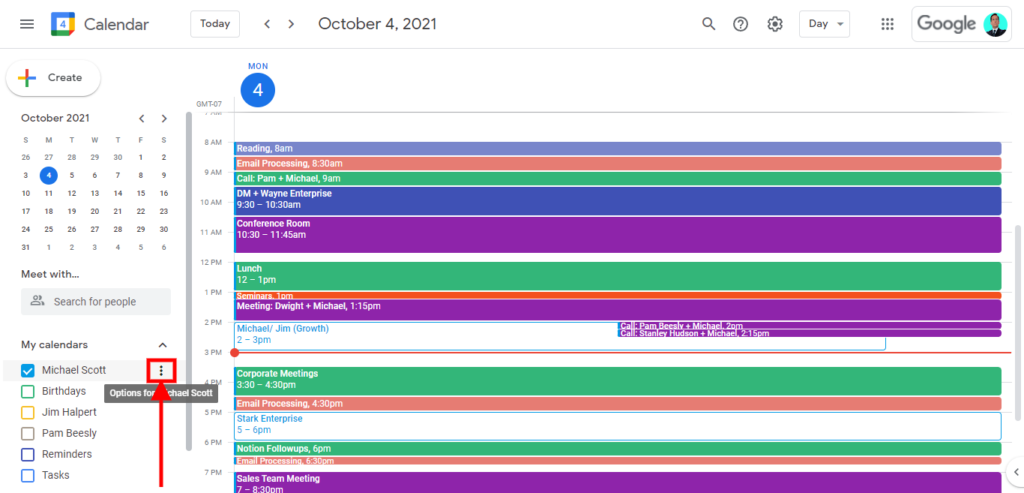
Step 2: Click on the Settings and Sharing option.
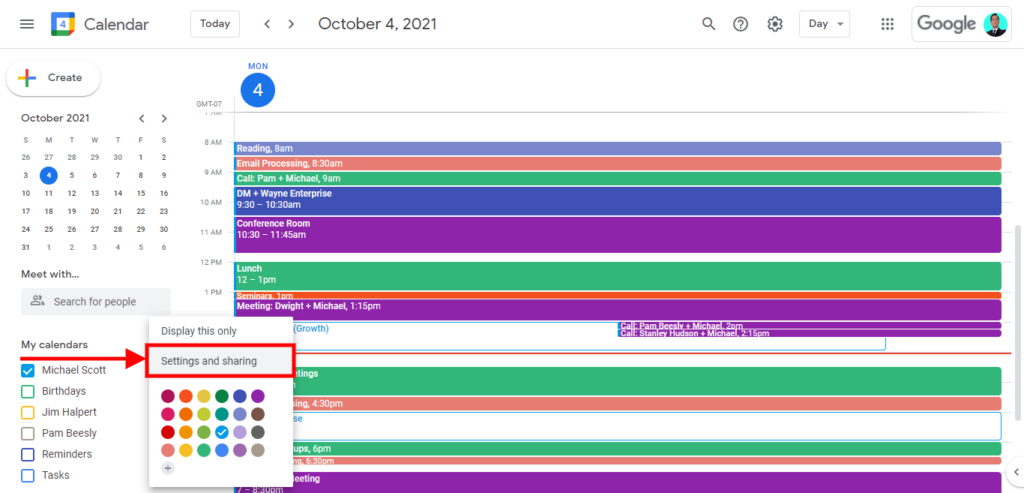
Step 3: Select “Share with specific people.”
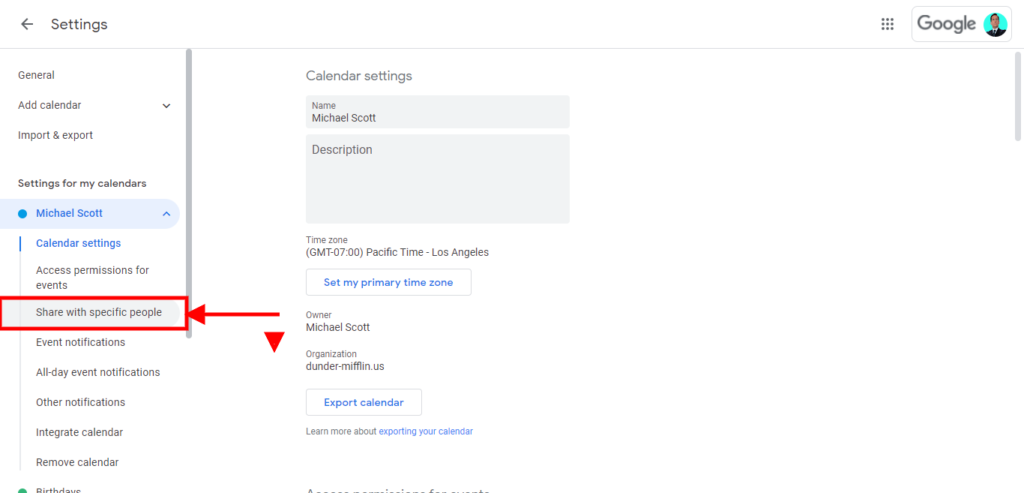
Step 4: Select “Add People”, write their email address, and set the permissions.
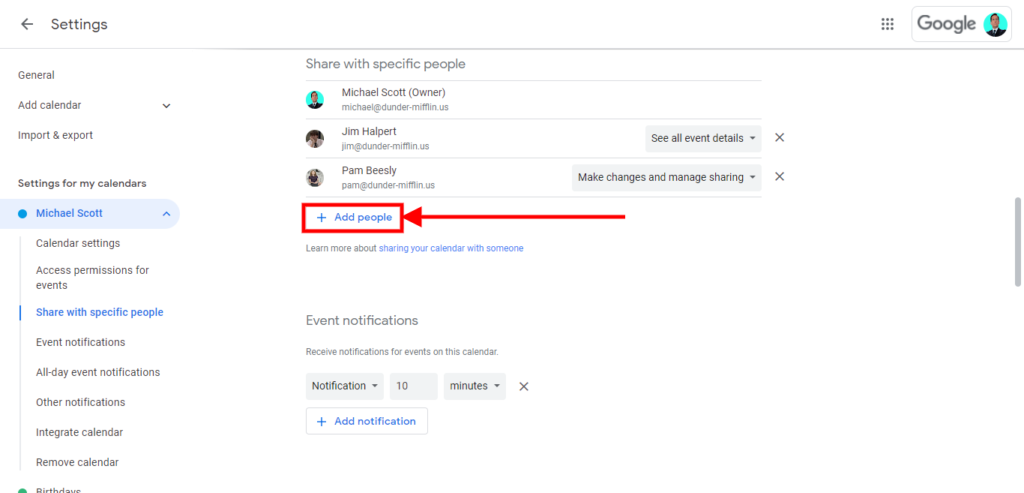
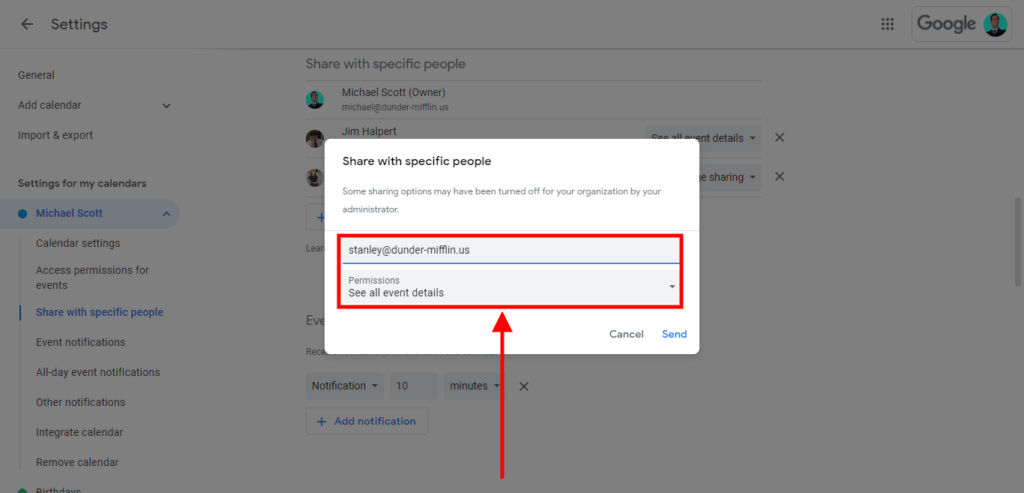
For more details on how to share your google calendar with your supervisor or team members, here’s how you can share your Google Calendar.
Benefits of multiple Google calendars
1. Keeps work and personal calendar events separate
You don’t want to mix up your work calendar with personal events and activities, right? Just imagine how it would look if you shared your work calendar with your boss and it has entries like “plan a date with X” or “buy flowers for Y”! Not too professional, is it? That’s why it helps to maintain multiple calendars on your Google calendar to keep things safely separate and private.
2. Efficient project management
By maintaining multiple calendars, you can take a look at your team members’ individual calendars to see how far they are on the track of project completion. It also helps you to identify if the workload is being shared across team members fairly.
3. Unnecessary back-and-forth emails
Want to set a meeting with a few of your teammates but never seem to find a slot when everyone is free? With multiple calendars, there’s no longer any need to shoot off emails to everyone asking for their free time. If you have access to their calendars, you can identify who’s busy at what time at a glance and propose a slot when everyone is available.
4. Multi-device syncing.
If you have more than one Google calendar in your google account, you can always access them from anywhere through Google apps and from any device like laptop, tablet, or mobile phone to check updates, make edits, and share with friends, family members, or colleagues.
Why Should You Merge Your Google Calendars?

Boost Your Project Time Management Skills and Merge Your Google Calendars
Merging multiple Google Calendars, whether it’s work, personal, or side projects, gives you a single, unified view of your time. Instead of juggling separate schedules, everything is brought into one place, making it easier to plan and avoid unnecessary stress.
Avoid Double Bookings
When your calendars are disconnected, it’s easy to schedule overlapping commitments without realizing it. Merging them helps you instantly spot potential conflicts, like a team meeting clashing with a doctor’s appointment, before they become a problem.
Improve Mental Clarity
Tracking multiple calendars requires you to switch between contexts throughout the day mentally. A merged calendar lightens that load, giving you one central timeline to refer to. Fewer mental tabs open means more focus on the task at hand.
Maintain Healthy Boundaries
Seeing your personal and professional time side by side makes it easier to set start and end times for your workday. You’re more likely to protect your evenings and weekends once you can visualize them.
Gain Full Visibility
A combined calendar gives you a bird’s-eye view of your week or month. This makes it easier to plan, allocate time for both work and personal priorities, and adjust your schedule as needed.
Stay More Organized
With one source of truth, you’re less likely to miss meetings, forget birthdays, or double-book yourself. It becomes easier to batch tasks, schedule breaks, and ensure your time reflects what matters to you.
Whether you’re managing meetings, appointments, or time off, merging your calendars can simplify your day and make it easier to manage both professional and personal commitments.
Optimize Time with Smart Tagging and AI
Tackle revolutionizes time tracking through seamless calendar integration, eliminating the need for manual logging. Our platform automatically captures and categorizes your time, providing actionable insights through intuitive dashboards and reports. We’ve built everything you need into one seamless package:
- An intelligent tagging system that works its way
- AI-powered automation to handle the tedious stuff
- Flexible reporting tools to track what matters
- Smart time capture right in your browser
For Businesses, By Businesses
Trusted by teams at Roblox, Deel, and Lightspeed Ventures, Tackle helps executives, team leaders, and customer-facing professionals understand and optimize their time allocation. Simply connect your Google or Outlook calendar, set up custom tags and automations, and gain valuable insights into how your team spends their time.
Strategic Insights, Not Just Tracking
Whether you’re tracking strategic initiatives, measuring team efficiency, or ensuring resource optimization, Tackle transforms time monitoring from a chore into a powerful decision-making tool.
Start using our automatic time tracking software for free with one click today!
Optimizing Your Calendar After Merging

Organizing your calendar ahead of time can set you up for success before the next project, task, or deadline. Don’t leave it to the last minute. Schedule time to organize your calendar and set it up in the best possible way. As plans and priorities change, so will your calendar, and you’ll need time to make sure it’s up to date and reflects your current schedule.
Pre-emptive Strike for Productivity
To get the most out of your calendar, you’ll want to check it the night before you start your next work day. There are fewer distractions from your daily schedule at this time. Furthermore, you’ll know how your schedule will look for the following day so that you can plan and be better prepared.
Color Code Your Calendar
After you’ve set up your calendar and have begun adding tasks and meetings, you’ll want to prioritize them using a color code. For example, blocked-out times can be represented in brown, meetings can be highlighted in blue, and large projects can be denoted in orange.
Using a color coding system will help you better know what to expect from your day, or even your week, at a glance. This enables you to be more organized and prepared for your workweek, tackling projects and meetings with confidence.
Automate Your Calendar Management
Automation plays a huge role in your daily life as a small business owner, especially if you’re using the right tools. Automating your calendar management is another way to increase your productivity.
For example, instead of asking an employee when it would be best to meet, many calendars today have features that automatically recommend the best times to meet with someone based on their calendar.
Prioritize Your Meetings
Not all meetings are essential. If you’re spending more time in meetings than you are working on your tasks, it might be time to take a hard look at your meetings and cut those that aren’t of utmost importance.
It might be a good idea to request an agenda for the meeting and consider its relevance to your daily schedule. If the meeting agenda seems trivial or not directly related to you, consider canceling it and use the time to serve your goals better.
Boost Productivity with Asynchronous Collaboration Platforms
Apart from that, as stated at Switchboard.app, you can leverage async collaboration platforms. It allows you to share apps and files in an up-to-date and interactive environment. You can even provide feedback and improve decision-making by keeping all necessary tools and conversations on one platform. It’ll ensure you get more work done.
Block Time for Tasks
Meetings aren’t the only thing that should be presented on your calendar. It’s also essential to add your tasks to your calendar. Adding tasks will help you set up your day and stay on track to complete everything you set out to accomplish.
Check your to-do list, estimate how much time each task will take, and add them to the calendar. When you block time for functions, no one else can schedule a meeting or an appointment with you so that you can wholly focus on your task at hand.
Schedule Breaks
Working tirelessly without a break also harms your productivity. Not taking breaks will lower your ability to focus and cause you to be way more tired than you need to be. To ensure you take breaks to refresh and maintain your focus, schedule them directly into your calendar.
You can try the Pomodoro method, which involves taking a break every 25 minutes of work (typically around 5 minutes). Then, after four 25-minute work sessions, you take a more extended break of 15-30 minutes. This will help keep you fresh and enable you to work on your tasks effectively.
Leave Room for Flexibility
It’s essential to leave room in your calendar for ad hoc meetings that may arise unexpectedly. Although the goal of calendar management is to have complete control over your time, there are often things that come up for which you need to be available.
Managing Ad Hoc Requests Strategically
When approached with an ad hoc request, assess its importance and find a time that best suits your schedule, taking into account the importance of other items on your calendar. For example, a client might need a bit of your time to express a concern, and you’d need to be available for that. Find the time that disrupts your calendar the least and schedule your ad hoc task then.
How to merge Google calendars
If you want to look at all the events of multiple Google calendars without clicking on each one of them individually, you can do so easily.
After you have added someone else’s Google Calendar as discussed in the section above, it should show on the left menu bar of the Google Calendar page.
However, to merge Google calendars into one, follow the steps below:
Step 1: Go to the calendar settings wheel on your Google calendar page and select Settings.

Step 2: Click on the Import & export option from the dropdown menu under General.

Step 3: Click on the Export button and a file will be downloaded on your computer.

Step 4: Extract the zip file to get the ics calendar file.
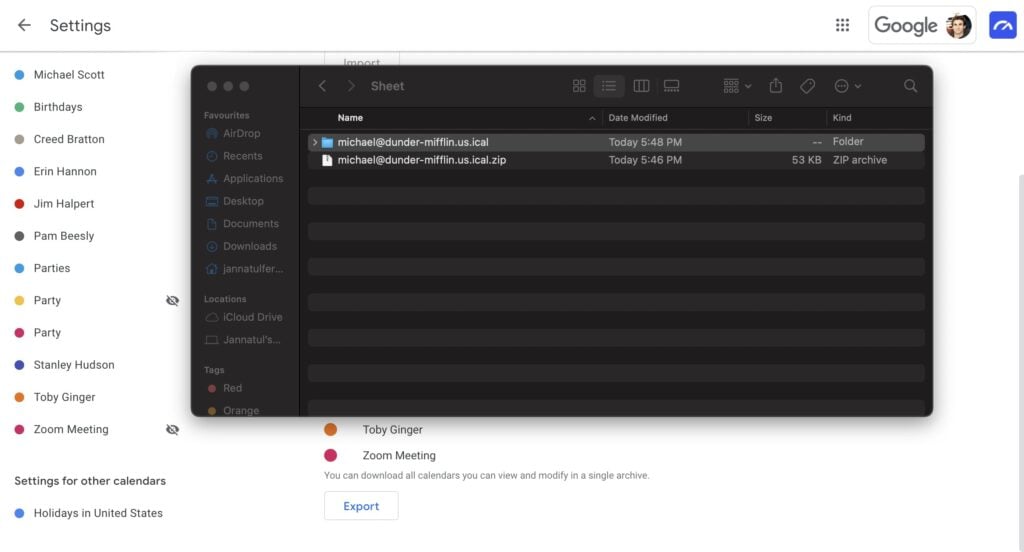
Step 5: Repeat this process for every calendar that you want to merge.
Step 6: Create a new Google Calendar account to merge all the calendars by going to your Google account on the top right corner and choosing Add another account option.
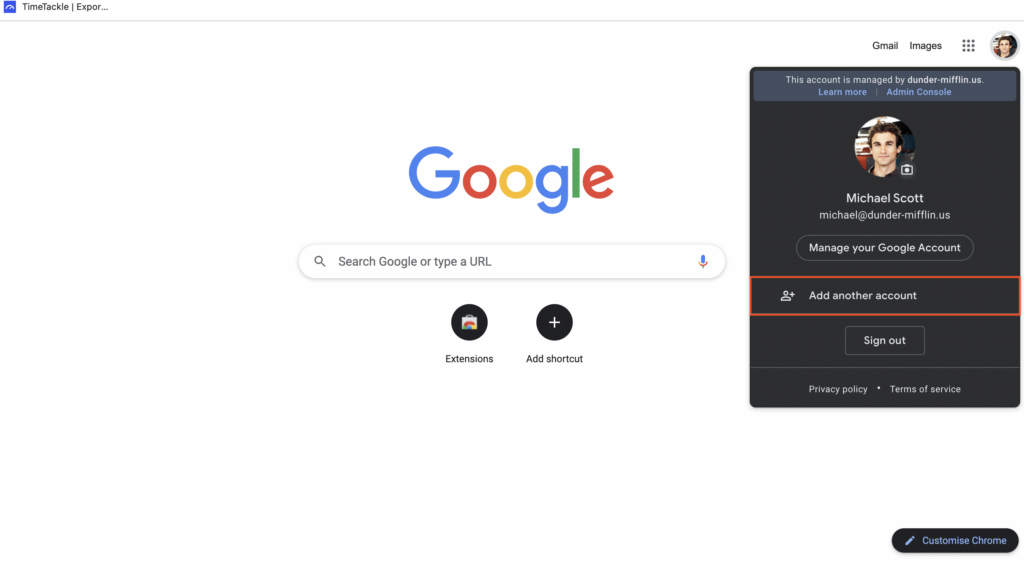
Step 7: On the new calendar, go to the Settings wheel, click the settings option, and click on the Import & export option.
Step 8: Now, under Import, choose Select file from your computer and one by one, import all the calendar files from your computer that you had exported. All the calendars will be imported in your new calendar and you can see them in a merged version.
You can try using Tackle to connect and merge multiple calendars into excel or spreadsheet format.
Exporting multiple Google calendars with Tackle
You’ve already made a Google Calendar and want to export it so that you can use or share a copy. TimeTackle provides a one-stop solution for all your calendar needs. There is no installation necessary, and it is completely hassle-free!
Step 1: Go to https://www.timetackle.com/login/ and sign in with your Google account.
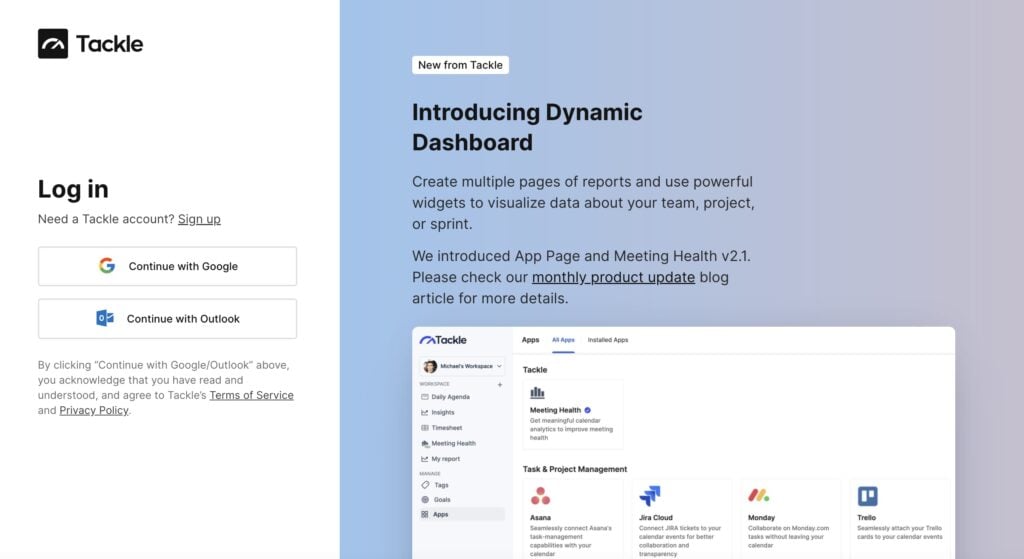
Step 2: From the Settings & Members, Select ‘Calendars”
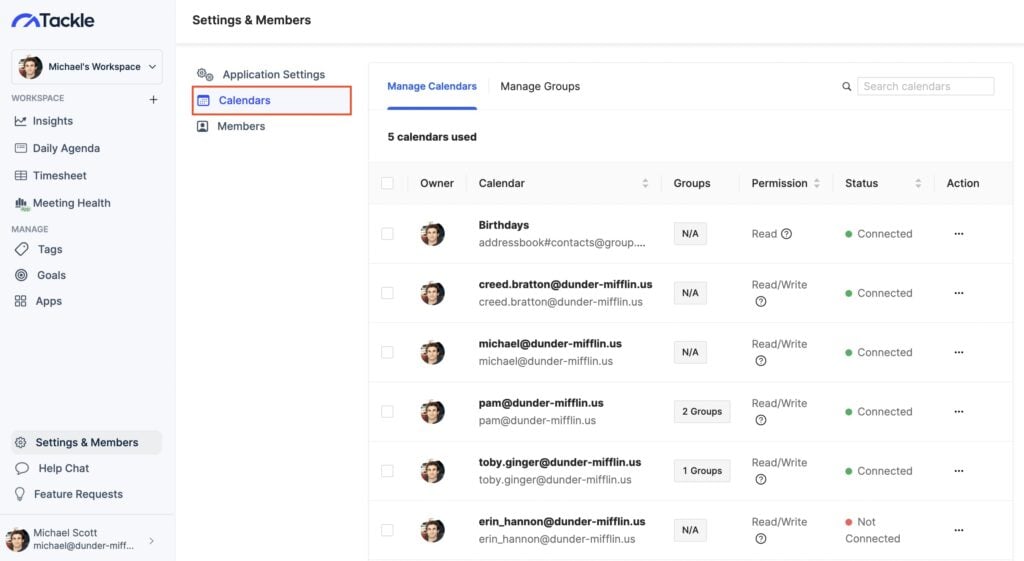
Step 3: Select the calendar/s you want to export.
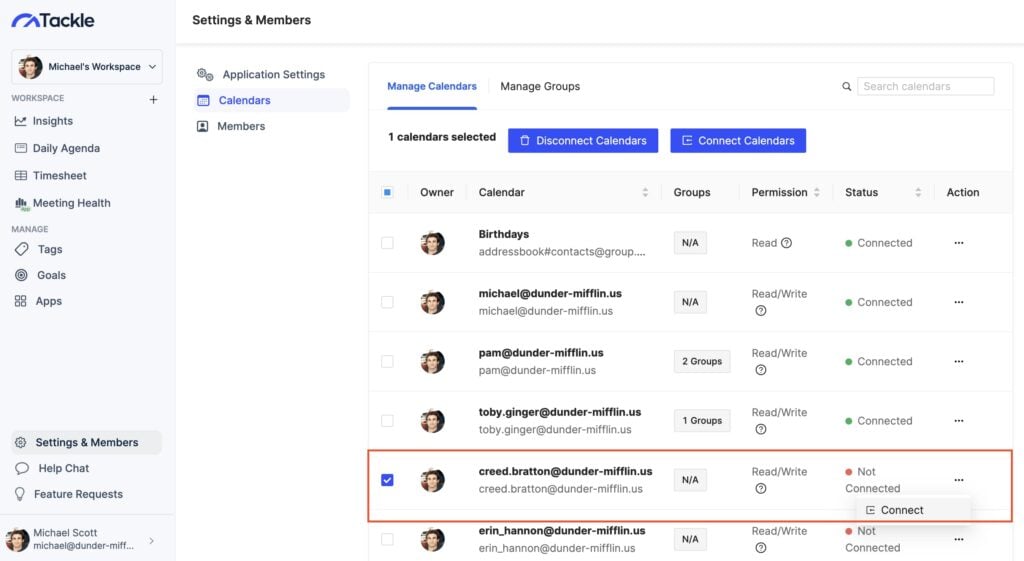
Step 4: Click “Connect Calendars” and import your calendar data into TimeTackle
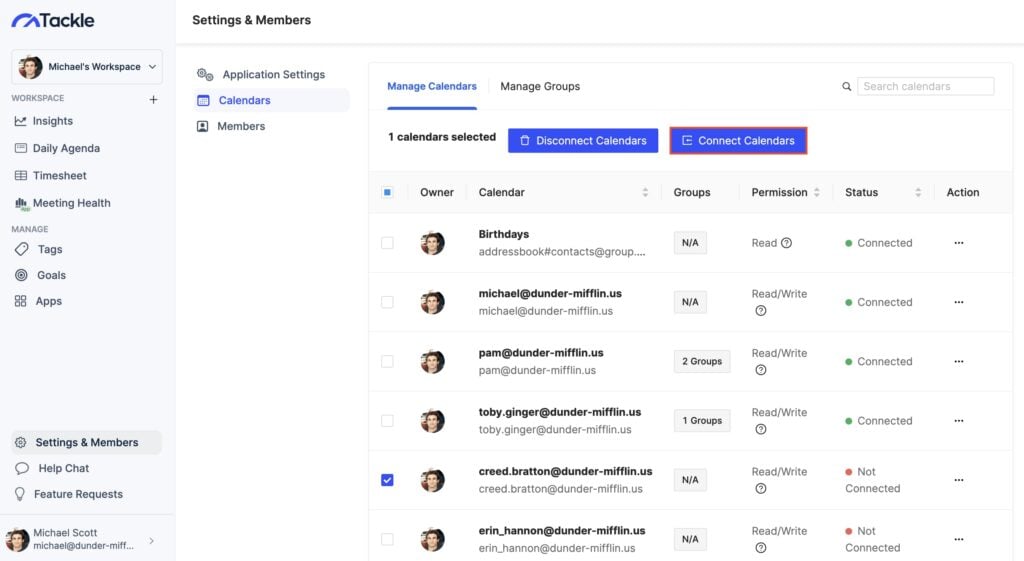
Step 5: Go to the “Insights” section, under Analyze, from the left panel
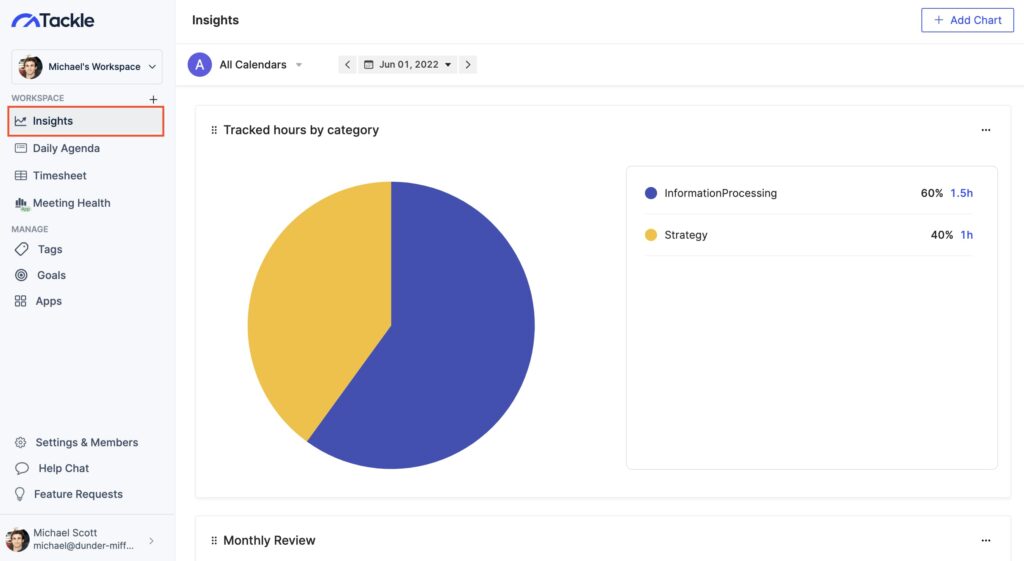
Step 6: Rename your report and select the calendars you want to merge and export from the “Filter” section
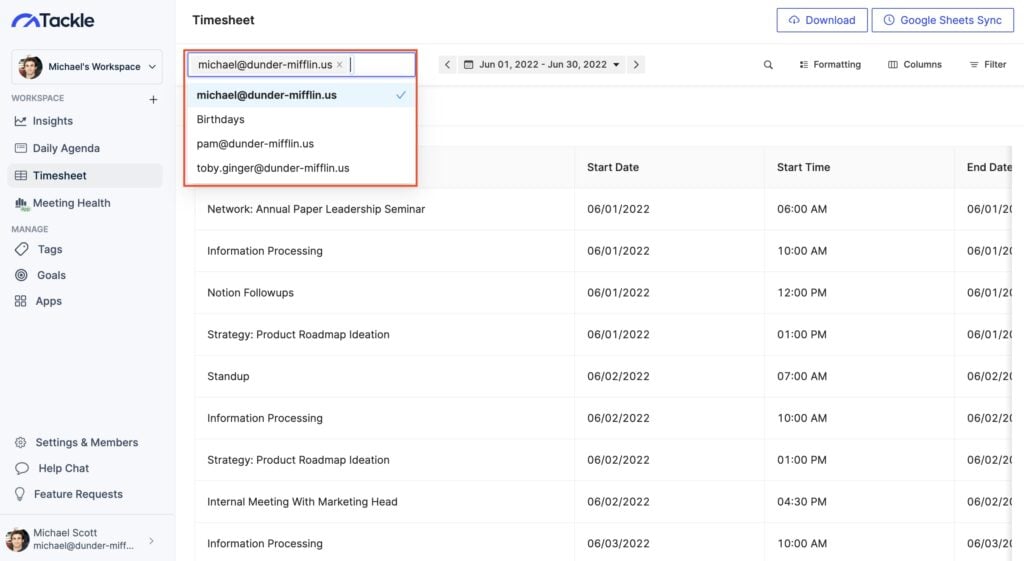
Step 7: From the “Columns” section, select the data fields you want to export along with the calendar events

Step 8 (Optional): Using the “Formatting” section you can also customize your data formats in the way that works best for you.
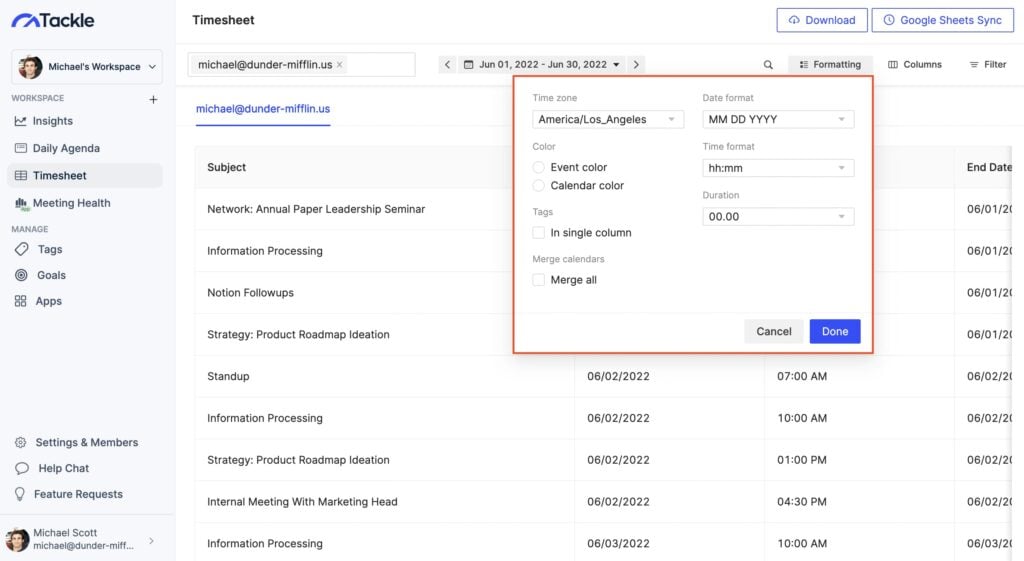
Step 9: Download your merged calendar in .xlsx or google sheet. That’s it your calendars are merged and exported!
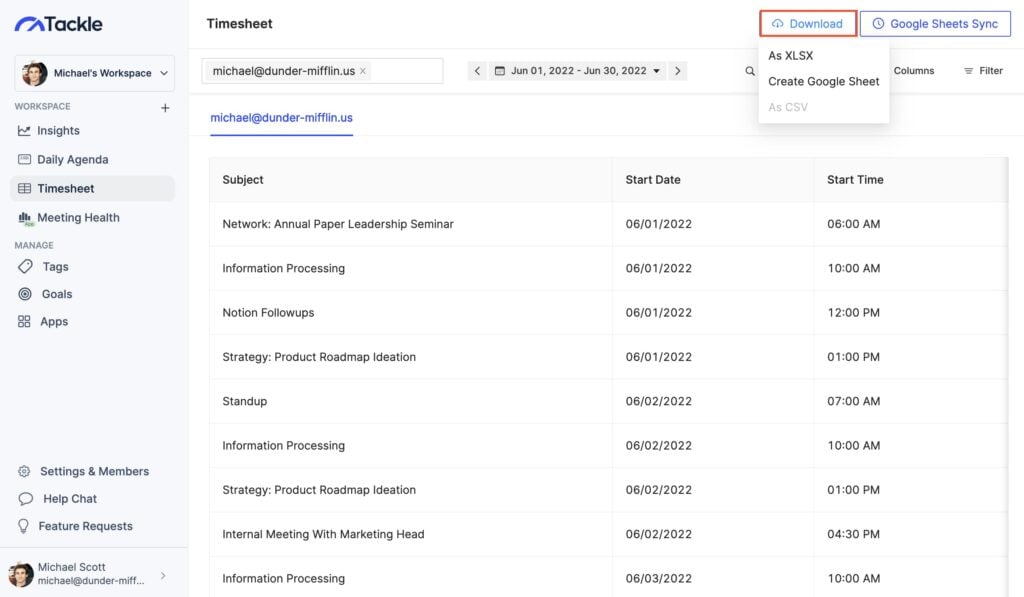
Merge Google calendar with Outlook calendar
If you’re maintaining two calendars – one on Google and the other one on Outlook – you may miss appointments you made on one as it didn’t show on the other one. Therefore, it’s wiser to merge your Google calendars with your Outlook one. Here’s how you can do it.
Step 1: Sign in to your Office 365 account and click on the app launcher on the top left corner.

Step 2: Click on the Outlook icon.

Step 3: Click on Settings and select the View all settings.

Step 4: Click on Calendar > Shared calendars.

Step 5: Under Publish a calendar, select Calendar and select “Can view all details” from the dropdown menu, and click on the Publish button.

Step 6: You will see two links – one HTML and the other an ICS link. The HTML link allows your calendar to be viewed by someone else in their browser. The ICS link will allow them to import your calendar to theirs.

Step 7: Click on the ICS link and copy it.

Step 8: Open your Google calendar and click on the + sign beside Other calendars on the left panel.

Step 9: Select From URL option.

Step 10: Under From URL, copy the link, and click the Add calendar button.

Step 11: Click the back arrow beside Settings one the top left corner and you will see the calendar added under Other calendars.

Merge Google calendar with Apple calendar
All your Apple calendar events will be merged with your Google calendar if you follow the steps below.
Step 1: On your iPhone or iPad, open the calendar app.
Step 2: Locate the Calendars button at the bottom of the screen and tap on it.
Step 3: When you see the iCloud section, choose the calendar that you want to merge, and right-click on the Info button.
Step 4: Go down and enable the Public Calendar option. Then tap the Share link button. Mail the link to yourself so that it’s safe with you.
Now follow steps 8 to 11 from the section above titled Merge Google Calendar With Outlook Calendar to have your Apple calendar added to your Google one.
There is another option to merge Google calendars with your Apple calendar.
Step 1: Go to www.icloud.com from your computer.
Step 2: Locate the Calendar icon and click on it.
Step 3: You will find the list of your calendars on the left side of the screen. Just click on the Share button beside the calendar you want to merge.
Step 4: There will be a pop-up calendar Sharing window. Make sure to check the Public Calendar option. When a link appears, copy it.
Step 5: Now follow steps 8 to 11 from the section above titled Merge Google Calendar With Outlook Calendar.
For more easy and useful Google Calendar tips and tricks check out our other blog on Google Calendar time tracking and boost your productivity: Tracking And Analysis With Google Calendar Time Tracking
FAQs
1. Can you merge two Google Calendars?
Yes, you can merge two Google calendars by following the steps mentioned above under the section How To Merge Google Calendars. In this case, you need to first export and then import any one calendar from your list to be merged with your main calendar.
2. How do I overlay Google calendars?
Overlaying Google calendars is easy. Under My calendars and Other calendars on the left panel of your Google calendar page, there is a list of calendars with a box beside each one. Just check the boxes to see an overlay of your Google calendars and uncheck to hide it. As each calendar has a different color code, it’s easy to identify which is which.
3. How do I count all the sum hours logged in my calendar?
You can learn more about calculating sum hours in Google calendar in this guide.
Related Reading: How to Export Google Calendar to Excel
